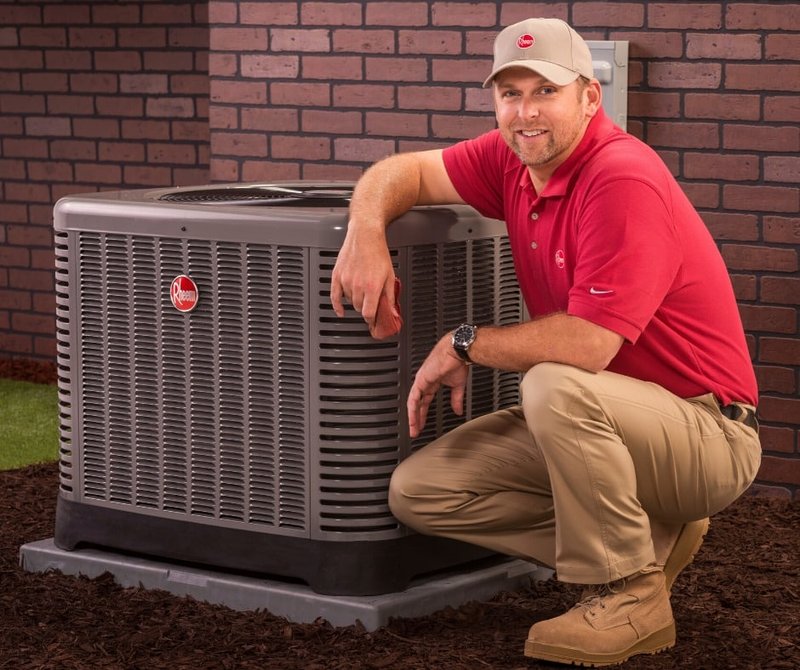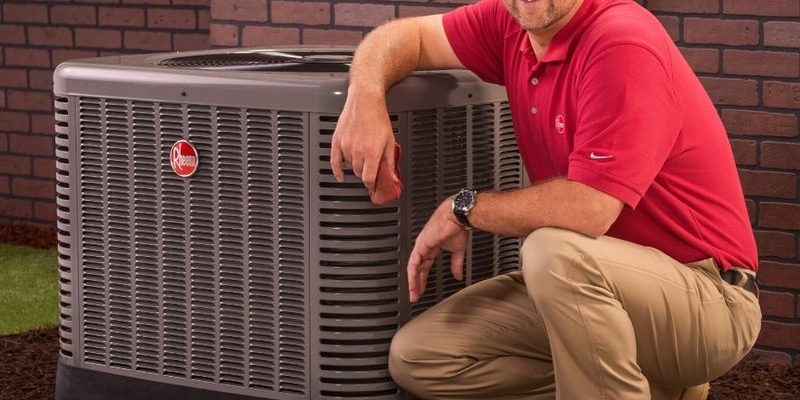
Let me explain why this matters and what info you’ll actually need before you jump online or call. Think of it this way: your HVAC system is like a finely tuned instrument, and registration is the sheet music that tells Rheem exactly what piece you’re playing. Without it, service calls or troubleshooting can turn into guessing games. So, what data does Rheem want to know? Let’s break down the essentials step-by-step.
Why Register Your Rheem HVAC System in the First Place?
Honestly, registration isn’t just a box to check. When you register your Rheem HVAC system, it connects your unit’s unique ID to your contact information. This makes warranty claims smoother, and it often speeds up troubleshooting if something goes wrong later. Imagine calling customer support and them asking for your system’s code or proof of purchase—registration stores all that upfront, so you don’t have to hunt for it later.
You might be wondering if it’s mandatory. Well, it’s not legally required, but skipping it could cost you peace of mind. Plus, some manufacturers offer special online tips, maintenance reminders, or even software updates that only registered owners get. For Rheem, it means they can alert you about recalls or service advisories related to your exact model.
On a practical note, registration can also help keep track of your purchase date. This date is crucial because HVAC warranties usually last 5 to 10 years, but that clock doesn’t start until you register (or sometimes from purchase date). So, in a way, registering protects your investment.
Basic Information You’ll Need to Register a Rheem HVAC System
Here’s the thing: Rheem asks for some straightforward details to make sure your system is matched correctly to you. Think of this like filling out a form when you open a new bank account—it’s about identity and verification.
First up is your **personal contact information**. This includes:
- Your full name
- Phone number
- Email address
- Mailing address
Don’t worry, Rheem uses this to send you reminders or important notices—it’s not just marketing fluff. Next, you’ll need the **product information**. This is where your HVAC’s unique “fingerprint” comes in, such as:
- Model number
- Serial number
- Date of installation or purchase
Model and serial numbers are often found on a sticker or plate inside the outdoor unit or near the indoor furnace. They look like a jumble of letters and numbers, but they’re crucial for making sure the right info connects to your exact unit.
Locating Model and Serial Numbers on Rheem Units
Finding these numbers might seem tricky at first if you’re not used to HVAC jargon. Let me paint a picture—imagine opening the door on your air handler or looking on the side of your outdoor condenser unit. Somewhere on a metal tag, you’ll see something like “Model: RP14” and “Serial: 1234X56789.”
If you’re unsure, most Rheem manuals show exactly where to look. Sometimes it helps to take a photo or write down the full strings carefully, since a single digit off can cause syncing errors. Also, the serial number often contains information about the manufacturing date, which can speed up registration.
Here’s a quick rundown of how to locate them:
- **Outdoor unit**: Check the back or side panels for a metal or plastic tag.
- **Indoor unit or furnace**: Open the access panel; the sticker is often near wiring or controls.
- **Documentation**: Your installation papers or manual may also list these numbers.
If you’re still stuck, don’t hesitate to ask your HVAC installer or call Rheem support with your address handy—they can guide you.
Additional Details That Help During Registration
Besides the basics, Rheem sometimes asks for more data to streamline service or sync your system’s software. This could include:
- Installer or contractor information: This helps Rheem verify the installation date and warranty start.
- Purchase receipt or proof of purchase: Digital or paper proof confirms eligibility for warranty support.
- System configuration details: Sometimes noted on invoices, such as capacity (e.g., 3-ton) or special features.
Honestly, having these ready before you start registering saves a lot of back-and-forth. Rheem’s online registration portal is usually pretty user-friendly, but if any info is missing or doesn’t match their records, you might run into delays.
How to Register Your Rheem HVAC System: Step-by-Step
Let me walk you through the registration process—it’s easier than it sounds. Usually, you head to Rheem’s official website or use an app, and there’s a dedicated HVAC product registration page. Here’s the breakdown:
- Step 1: Go to Rheem’s product registration page.
- Step 2: Enter your contact details like name, email, and address.
- Step 3: Input the model and serial numbers exactly as they appear on your unit.
- Step 4: Add installer or purchase info if required.
- Step 5: Review everything carefully—typos can cause syncing issues.
- Step 6: Submit your registration and keep a copy of confirmation.
Once you hit submit, you might get a confirmation email. Some systems allow you to create an account for easier future access or to track service history. It’s like setting a digital home base for your HVAC.
Troubleshooting Registration Issues: What to Do If Things Go Wrong
Here’s the thing: even with the best info, tech hiccups happen. Maybe your serial number doesn’t match their database, or the system keeps telling you the unit is already registered. If that happens, don’t freak out.
First, double-check the numbers you entered. Serial codes can be confusing, especially if letters and numbers look similar (like “O” vs “0”). If you’re sure it’s correct, call Rheem’s customer support or use their chat feature. They can often reset codes or verify your unit manually. Sometimes installers might have registered the unit already, and you just need to sync your info.
Also, pay attention to batteries or smart remote setup if your Rheem HVAC comes with a remote control. A dead battery or out-of-sync remote can feel like a registration issue but is actually a pairing problem.
Why Registering Beats Skipping It: The Big Picture
Honestly, skipping registration is like buying a gym membership and never telling the gym who you are—it’s hard to get the full benefits. Without registration, warranty claims might be denied or delayed, and you might miss out on helpful maintenance reminders that keep your system running efficiently.
Rheem’s HVAC systems aren’t cheap, and they’re meant to last years. Registering your unit is a small effort upfront for much smoother service down the road. Plus, it helps Rheem improve future products based on real customer data.
Think of registration as your HVAC system’s handshake with Rheem—it says, “Hey, I’m here, and I’m ready for the best care you can offer.”
Wrapping It Up: Making Your Rheem HVAC Registration Smooth and Simple
So, what info do you need to register your Rheem HVAC system? It boils down to a few essentials: your contact info, the precise model and serial numbers, and purchase or installer details. Taking your time to gather these before you register makes the process painless.
Remember, registration isn’t just a formality; it’s your ticket to warranty security, faster troubleshooting, and sometimes even digital perks. And if you get stuck, Rheem’s support team is there to help clear up any sync or reset issues.
Next time you hear about “registering your HVAC,” picture it as just one more way to connect with your system and keep it humming smoothly through every season.
